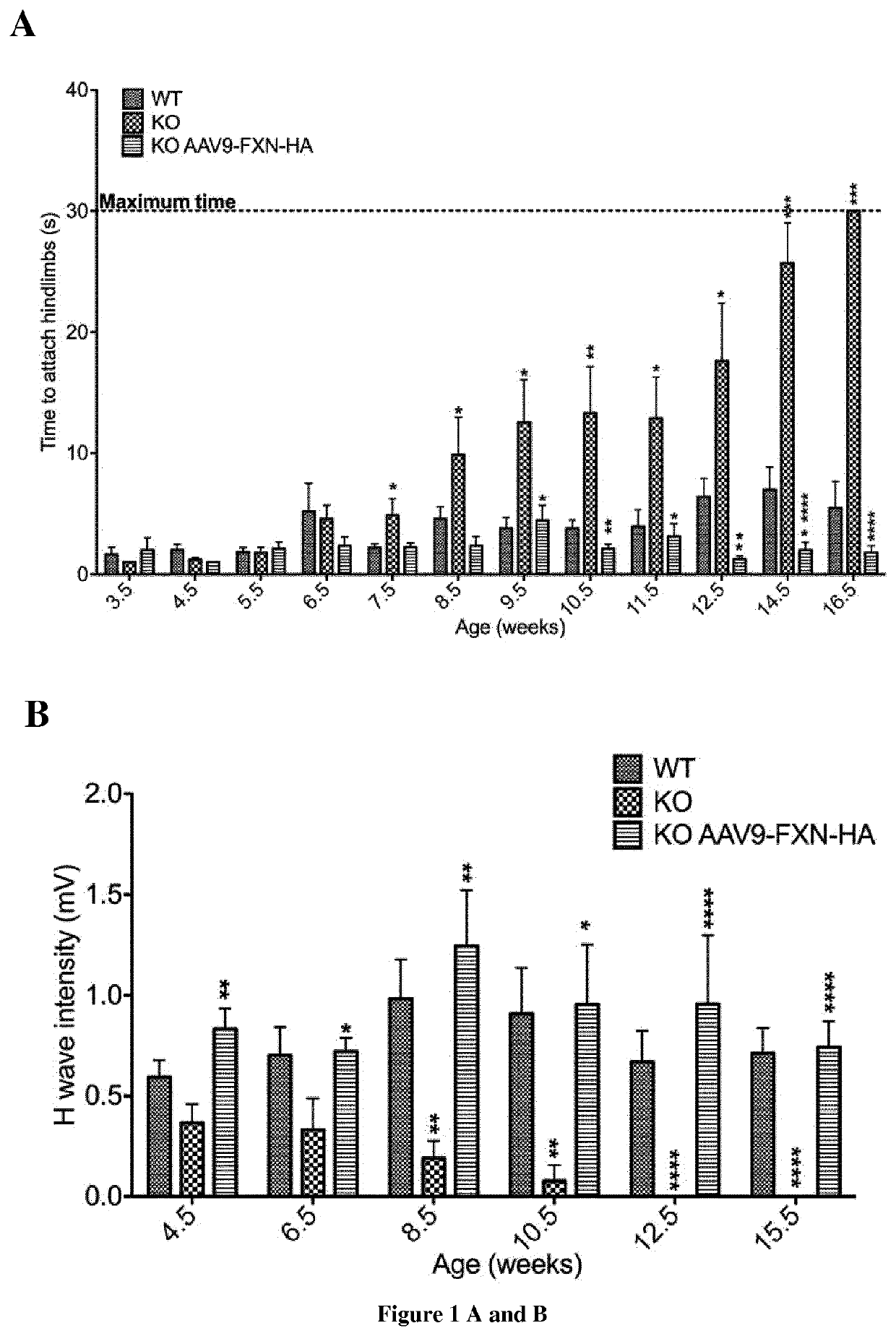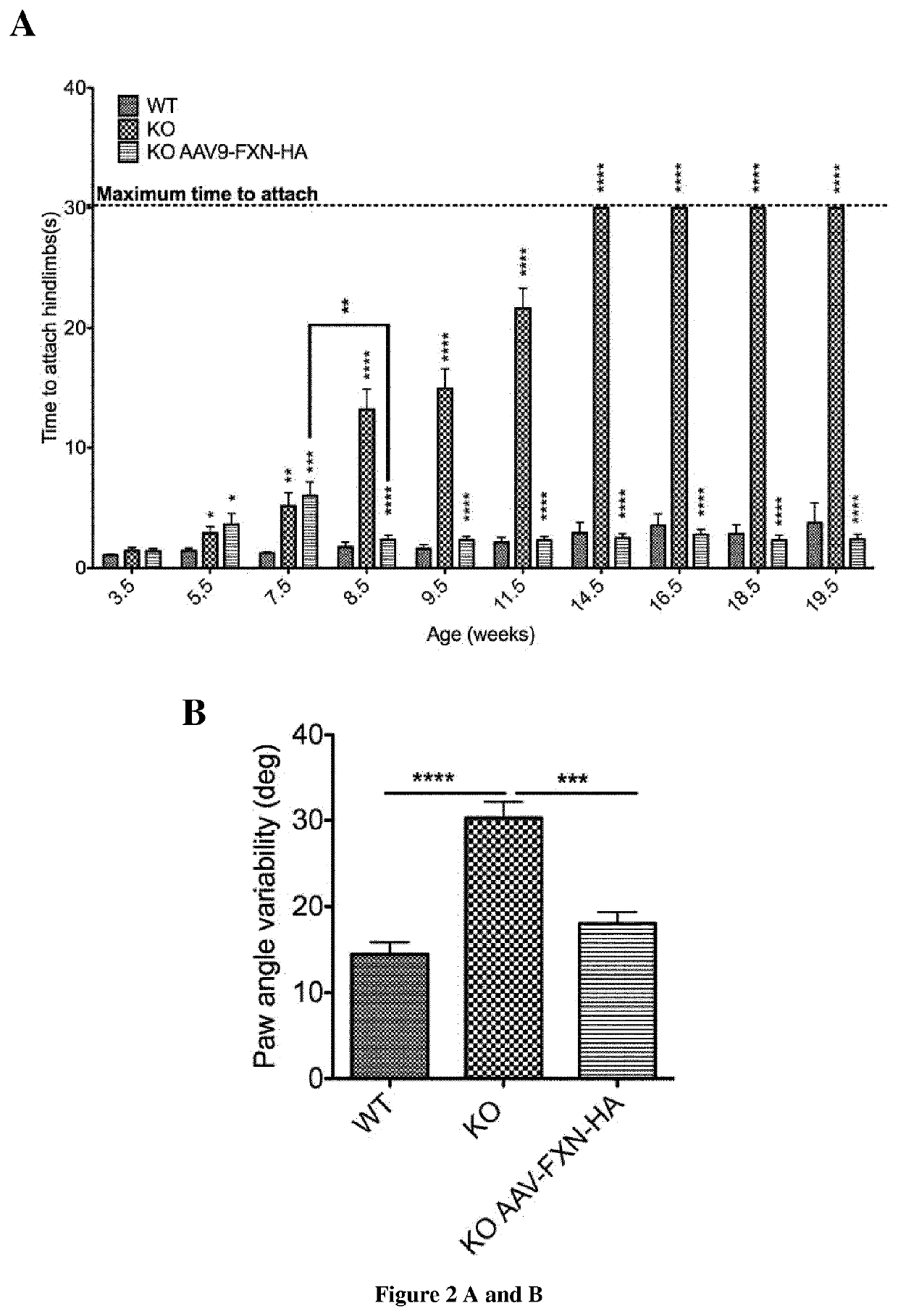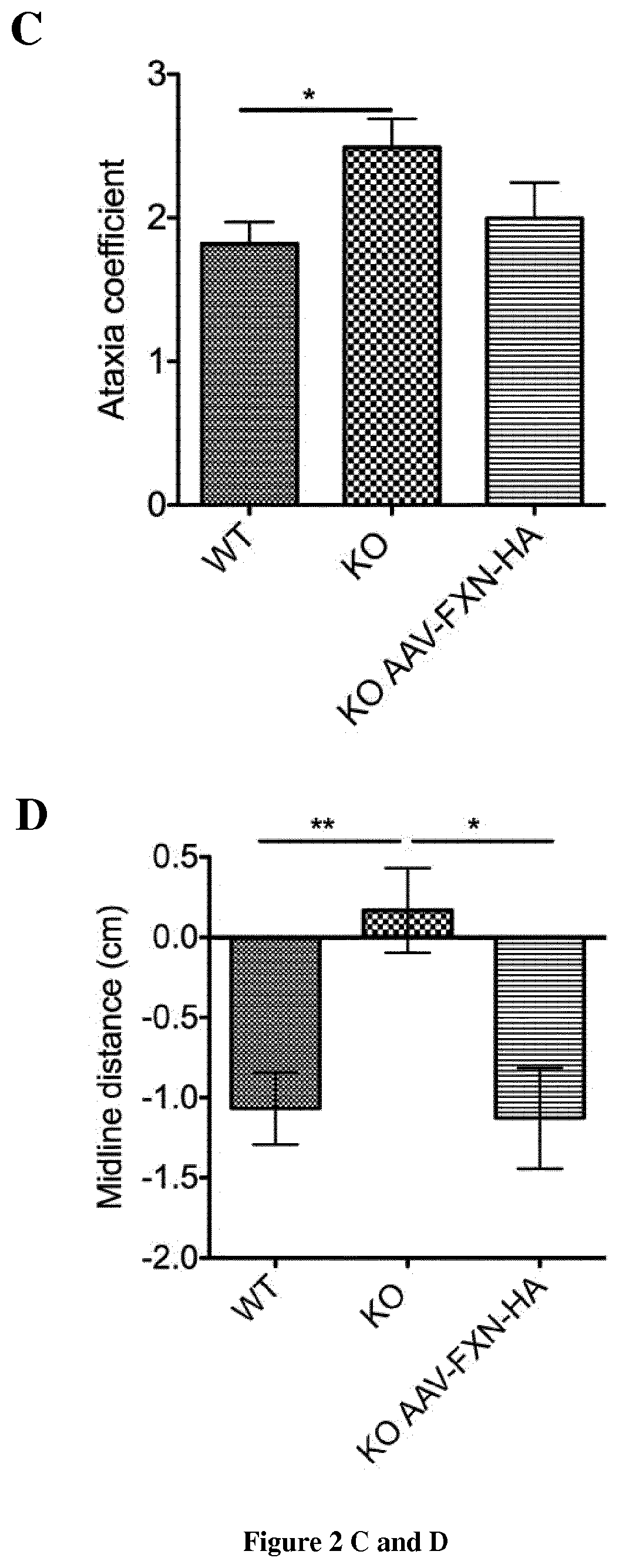Methods and pharmaceutical composition for the treatment and the prevention of neurological phenotype associated with Friedreich ataxia
a technology of friedreich ataxia and pharmaceutical composition, which is applied in the direction of viruses/bacteriophages, peptide sources, genetic material ingredients, etc., can solve the problems of severe loss of activity in fe—s containing proteins, loss of energy production, and congestive heart failure and arrhythmia, so as to prevent the onset of sensori-motor defects and degeneration of the dorsal root ganglia, and prevent neurological phenotyp
- Summary
- Abstract
- Description
- Claims
- Application Information
AI Technical Summary
Benefits of technology
Problems solved by technology
Method used
Image
Examples
examples
[0109]Material & Methods
[0110]Adeno-Associated Virus Production
[0111]A plasmid encoding a human frataxin (hFXN) fused to a hemagglutinin (HA) tag under the control of the cytomegalovirus / β-actin hybrid promoter was produced as previously described (Perdomini et al, 2014). Both AAV9-CAG-hFXN-HA and AAVrh.10-CAG-hFXN-HA vectors were produced as previously described (Rabinowitz et al, 2002) in the Vector Core at the University Hospital of Nantes (see the website located at www(dot)vectors(dot)nantes(dot)inserm(dot)fr). The final titers of the batches used were 6.4×1012 vg / ml for the AAVrh.10 and 2.5×1013 vg / ml for the AAV9.
[0112]Animal Procedure
[0113]Mice with a deletion of the frataxin gene in neuronal cells (FxnL3 / L−; PvalbCre+) (Pvalb-KO) were generated and genotyped as described previously; Fxn+ / L3 mice were used as controls. Animals were maintained in a temperature and humidity controlled animal facility with a 12 h light-dark cycle and free access to water and a standard rodent c...
PUM
| Property | Measurement | Unit |
|---|---|---|
| temperatures | aaaaa | aaaaa |
| temperatures | aaaaa | aaaaa |
| temperatures | aaaaa | aaaaa |
Abstract
Description
Claims
Application Information
 Login to View More
Login to View More - R&D
- Intellectual Property
- Life Sciences
- Materials
- Tech Scout
- Unparalleled Data Quality
- Higher Quality Content
- 60% Fewer Hallucinations
Browse by: Latest US Patents, China's latest patents, Technical Efficacy Thesaurus, Application Domain, Technology Topic, Popular Technical Reports.
© 2025 PatSnap. All rights reserved.Legal|Privacy policy|Modern Slavery Act Transparency Statement|Sitemap|About US| Contact US: help@patsnap.com



